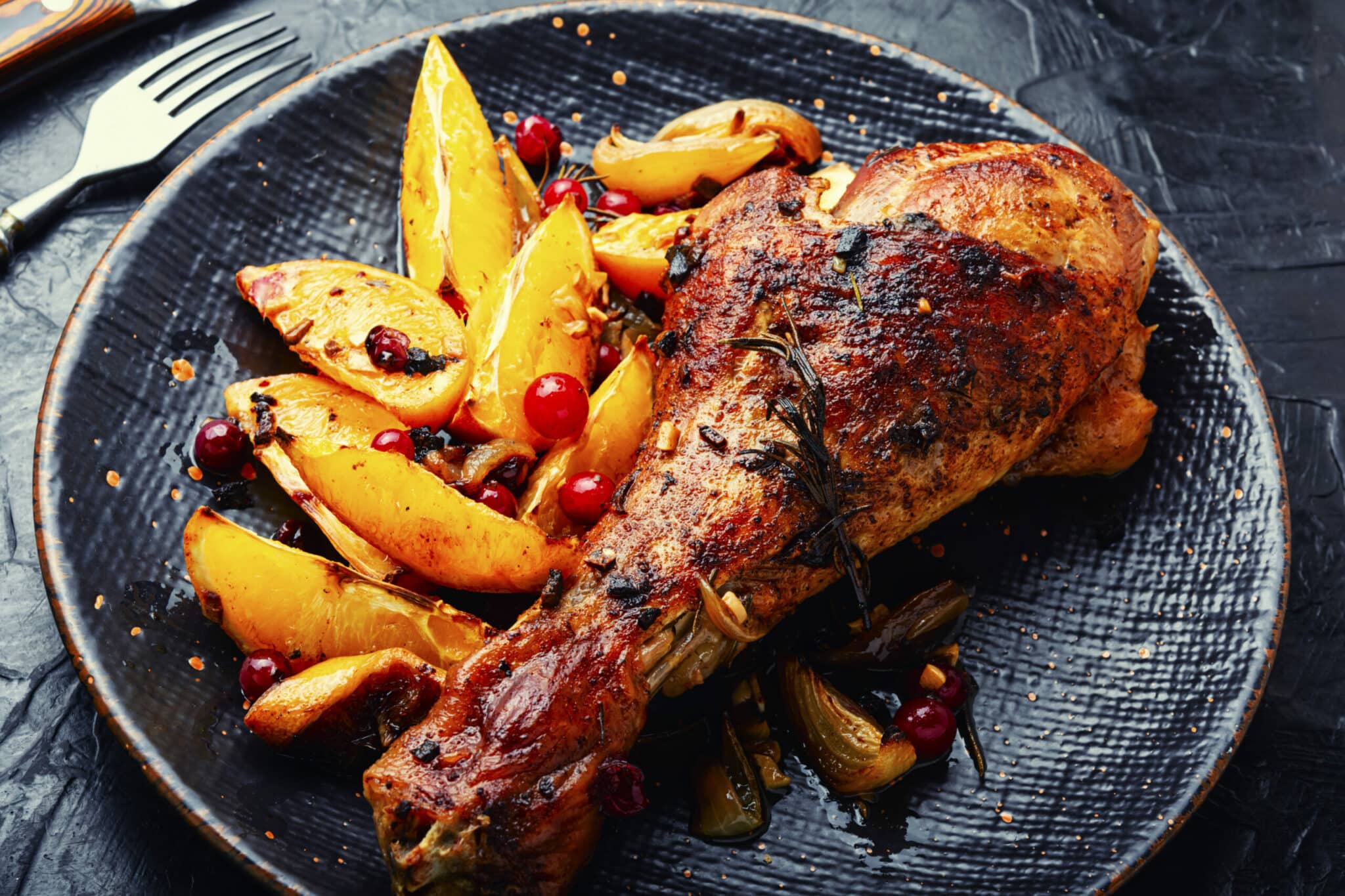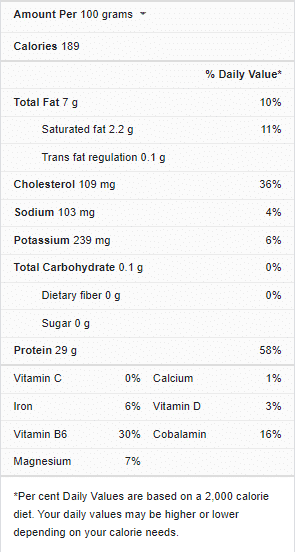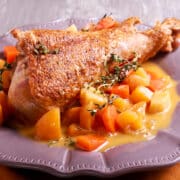One of the best things about turkey legs or thighs is that they can be transformed into a meal fit for any holiday spread with just a few basic ingredients. The skin is delightfully crispy, and the black turkey flesh is beyond delicious, so this quick roasted turkey leg is sure to turn some heads. Even better, once the turkey is cooked, you won’t have to carve it before digging into the delicious pleasures it holds.
In this article, we’ll show you how to cook turkey legs or thighs in the oven, and helpful tips to derive maximum flavor from your cooking. Ensure to pay attention to our timing guidelines in order to achieve the best possible results.

Turkey nutrition facts

Tips for cooking Turkey legs and thighs
Pay attention to the following helpful tips that will guide you to excellent results when cooking turkey legs or thighs:
Ideal amount to cook – Per pound of bone-in turkey, it’s advisable to plan on about two servings. However, if you have robust diners who like to have their own piece of turkey to themselves, you could want to buy one piece per person and then consume the leftovers.
Use fresh herbs – Fresh herbs are not only a lovely garnish, but they also provide a lot of flavor to the turkey legs and thighs. Rosemary, sage, parsley, and thyme are some of the most popular herbs to use in cooking up a recipe like this, so feel free to explore.
A note on assessing doneness and resting – When the internal temperature of the turkey legs or thighs hits 165°F, you’ll know they’re done. Using a meat thermometer is the simplest approach to ensure that the temperature is correct.
Allowing the turkey legs to rest is important because it allows the liquids inside the legs to redistribute. If you cut too soon, the juice will run out.
Cooking time for Turkey legs and thighs
Keep the following timing guidelines in mind when cooking turkey legs and thighs:
| Cooking procedure | Cooking time |
| Cooking turkey legs or thighs in the oven at 350 degrees Fahrenheit | 45 to 50 minutes |

Flavorful roasted Turkey legs or thighs (2 servings per pound)
Ingredients
- Per pound of turkey (approximately 1 large turkey leg or thigh)
- ½ teaspoon of kosher salt (use a scant ½ teaspoon if using table salt)
- ¼ teaspoon per pound of freshly ground black pepper and garlic powder
- ⅛ teaspoon per pound of dried thyme, sage, and paprika
- 1 tablespoon of butter, softened or melted
Instructions
- Mix the pepper, salt, garlic powder, sage, dried thyme, and paprika in a small bowl. If you prefer, this can be done a number of days ahead of time and then stored at room temperature, covered.
- 1 to 2 days before the turkey legs are to be roasted, prepare them with the seasoning ingredients. To begin, if the turkey legs are wet, pat them dry with a paper towel before sprinkling the herb mixture all over them. Gently push some of the herb mixtures under the skin before drawing the skin back and covering the meat. Place the turkey legs in a zip-top plastic bag, then seal it. Refrigerate them for 1 to 2 days, flipping them over a few times if necessary on a baking tray or plate (you could also wrap them in another bag to capture any leaks).
- Take the turkey legs out of the bag the night before or early on the day of cooking and blot it dry using a paper towel. Return the turkey legs to the baking sheet, uncovered. To dry out the skin, place them in the refrigerator for a minimum of 4 hours, or overnight. Doing this helps to crisp up the turkey pieces.
- Take the turkey legs out of the refrigerator, then set them aside to come to room temperature while your oven is warming up. Allow the oven to heat up to 350 degrees Fahrenheit. Brush the melted butter on the turkey skin, or spread it on if you softened the butter instead.
- Put the turkey legs inside a baking dish and leave it to roast for 45 to 50 minutes, or until an internal temperature of 175°F to 180°F is reached when you check through the meatiest region of the thigh or leg. (Ensure to check the turkey a few minutes ahead of time and if necessary, adjust the cooking time based on the size of the turkey part and usual oven-style variations.)
- Switch to the broil setting on your oven at this stage if you prefer somewhat crisper/browner skin, then broil the turkey legs for a minute or two, monitoring closely to avoid burning. Allow 10 minutes for the turkey legs to rest before serving.
Notes
Recipe notes:
- If the size of your turkey legs or thighs differs from the recipe, simply adjust the seasonings and cooking time accordingly.
- You can omit the butter and still get an excellent outcome. The skin, on the other hand, will not crisp as much as it should, or brown as deeply and evenly.
- If you’d rather eat turkey breasts, it’s okay to use bone-in, skin-on turkey breast halves instead of using the turkey legs or thighs. Just make sure you’re following the recipe as written but lowering the cooking time to obtain an internal temperature of 165°F.
- Dark meat is more tolerant and therefore more difficult to master than white meat, and it tastes better when cooked to a little higher temperature than breast meat (175-180°F versus 165°F).
- Each pound of turkey yields roughly 1/4 cup of pan juices, which are wonderful when drizzled over the turkey, mashed potatoes, stuffing, and other dishes. These pan juices could be thickened and turned into gravy if needed, or you could add them to a make-ahead gravy base.
Cooking turkey legs or thighs in the oven is a really easy process, and the results taste really delicious. If this is a recipe you would love to try, then we recommend following the instructions we have outlined in this article to get the best possible results.
If you’d like more recipe ideas for cooking turkey legs or thighs, then take a look at this video recipe.